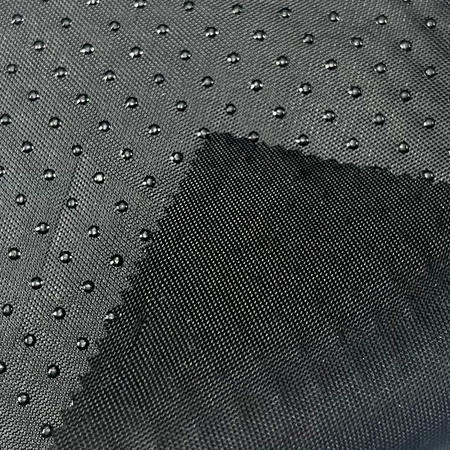The thickness of the coating has a profound impact on the performance of the drip-molded Oxford fabric, which covers multiple aspects such as water resistance, abrasion resistance, flexibility, weight, weather resistance and cost.
Waterproofness: The thickness of the coating is directly related to the waterproof ability of the drip-molded Oxford fabric. Thicker coatings provide more effective waterproof protection because they can form a more complete barrier to prevent water penetration. This is particularly important in application scenarios that require long-term exposure to humid environments, such as outdoor tents and waterproof backpacks. Although thinner coatings still have certain waterproof properties, they may not be able to cope with the challenges of long-term use or high humidity environments, and are prone to leakage problems.
Abrasion resistance: The thickness of the coating also affects the wear resistance of the fabric. Thick coatings can significantly improve the fabric's ability to resist friction and wear by adding a protective layer on the surface of the fabric. This makes thick-coated drip-molded Oxford fabrics very suitable for occasions that withstand greater wear, such as mountaineering bags or heavy equipment. However, thinner coatings are prone to wear and tear when faced with frequent friction and collisions, reducing the service life of the fabric.
Flexibility and feel: The thickness of the coating has a significant impact on the flexibility and feel of the fabric. Thick coatings may make the fabric stiffer, affecting its softness and comfort. This is a disadvantage for applications that require high flexibility and comfort, such as sportswear or lightweight backpacks. In contrast, thin coatings can maintain the flexibility of the fabric, making it softer and more comfortable, but may compromise its water resistance and abrasion resistance.

Weight: The thickness of the coating also directly affects the weight of the fabric. Thickly coated fabrics are heavier due to the increase in coating material, which may be a disadvantage in products that require lightness, such as travel backpacks or portable equipment. Thinly coated fabrics are lighter and more suitable for applications that need to reduce weight.
Weather resistance: The thickness of the coating also affects the weather resistance of the fabric. Thick coatings provide better protection and can more effectively resist the effects of UV rays and temperature changes on the fabric, thereby extending the life of the fabric. In extreme weather conditions, such as hot or cold environments, thickly coated drip-molded Oxford fabrics are more stable and durable. Thin coatings may be more susceptible to degradation or damage under these conditions.
Cost: Finally, the impact of coating thickness on cost cannot be ignored. Thick coatings generally require more material and more complex production processes, which makes them relatively expensive, which may increase the price of the final product. Thin coatings are suitable for projects with limited budgets due to the low material usage and lower cost, but may compromise performance.
Choosing the appropriate coating thickness requires comprehensive consideration based on the specific application requirements. If high water resistance and abrasion resistance are required, thick coatings are more suitable, while if flexibility and lightness are required, thinner coatings can be selected.















